Subscribe now and get the latest podcast releases delivered straight to your inbox.
Picture this: You’re a salesperson getting ready for a call with a prospect.
You’re anticipating any and all possible buyer questions and ready to provide articles, case studies, details, and expertise needed to answer them.
Then, in the call itself, just when you’re preparing to answer those same old questions, something magical happens...
There are no questions.
The prospect already has the answers.
Every single one.
Your prospect already has all the information they need. They already trust your business and they're eager to move forward into the next stages of the sales process.
This is assignment selling in action.
Simply put, assignment selling is the practice of using educational content about your products and services to help speed up the sales process.
This content helps answer questions before they come up, making sales calls more productive and efficient.
However, like most great sales and marketing tactics, assignment selling is easy to get wrong when you're new to it.
Assignment selling is sales enablement — but better
The theory behind assignment selling is simple: An educated prospect is more likely to become a customer — and do so faster.
In practice, assignment selling usually begins before a first sales call, when a salesperson sends pieces of content to the prospect to review before the call takes place.
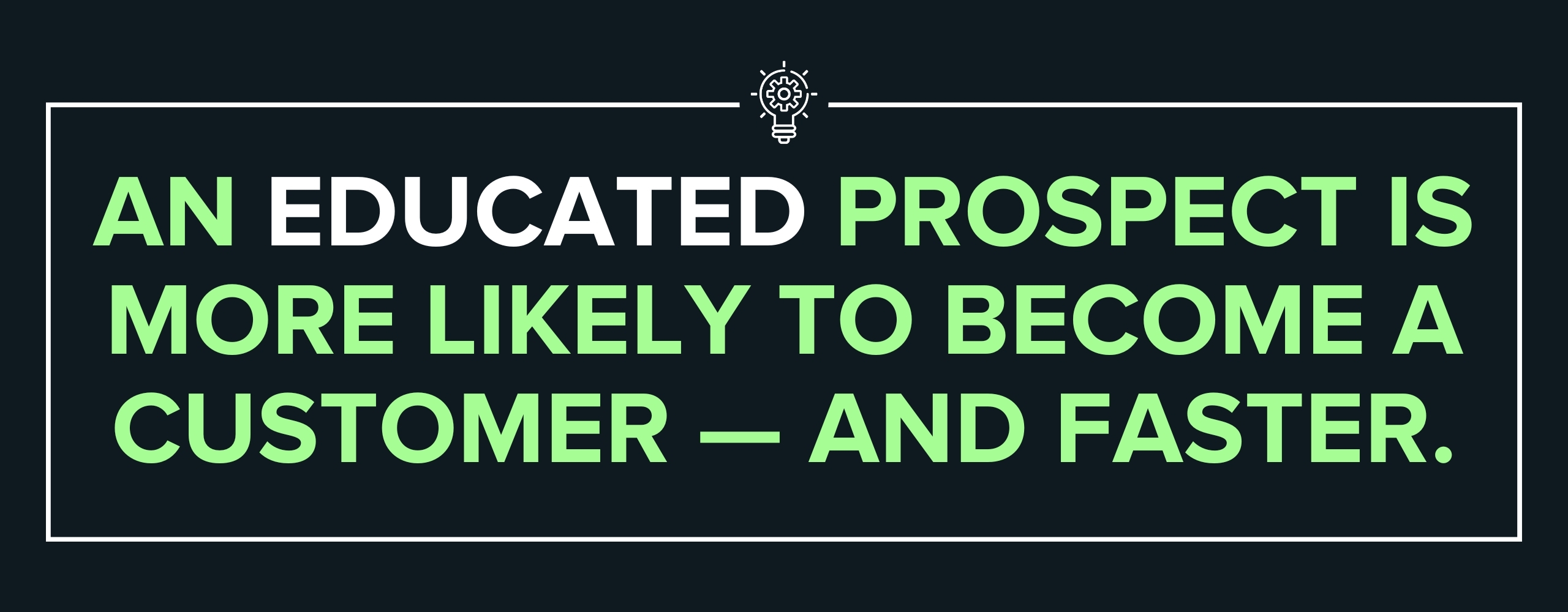
The content is designed to answer the most pressing questions that buyers have at that stage in the sales process.
Once a prospect has gone through the material, ideally, they'll be better educated and prepared for specific conversations.
With many of the standard concerns addressed ahead of time, you can focus on that prospect's specific needs during the meeting.
On the flip side, some prospects may opt out of the sales process (or not complete the assignment at all). While no salesperson likes canceled meetings, anyone who opts out is likely a bad-fit prospect, so your time is saved in the long run.
Overall, assignment selling can be a sales rep’s greatest tool, but only if it's done well.
Here are some common mistakes to avoid.
Avoiding 4 common assignment selling mistakes
If you're just getting started with ssignment selling, you can avoid some common mistakes others have made.
Here are four common things to avoid:
- Assigning too much or too little content
- Moving forward even if the prospect blatantly ignores the assignment
- Using only text-based content
- Not selecting unique content for each prospect or situation
Let's dive into each to see how you can avoid it.
1. Assigning too much or too little content
How much is too much content?
Imagine you're a prospect. If you received an email with 15 different links you were supposed to read before your call, would you do it?
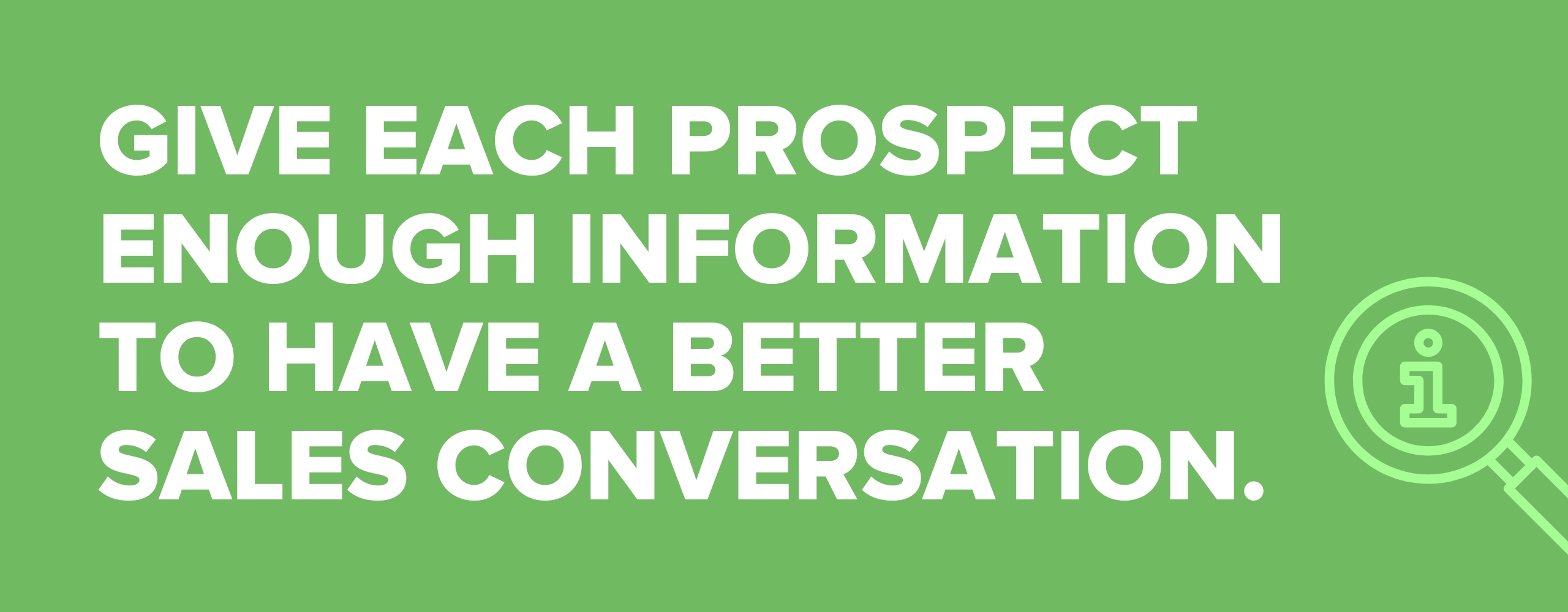
You want to give each prospect enough information to have a better sales conversation, but you don't need to assign them the entire encyclopedia.
If you assign too much, you're more likely to get ignored.
How to fix it:
I recommend two or three pieces of content ahead of each call. Any more than that and you're pushing it.
However, you can provide more content as long as you don't assign it. Something like a buyer's guide might be lengthy, but prospects can use it as a reference material they can look through, reading what they'd like.
Also, explain what each piece of content is and why it's relevant and helpful (if that's not obvious from the title).
2. Moving forward if the prospect doesn't complete the assignment
So, what do you do if a prospect doesn't complete the assignment? Unfortunately this happens, and it's usually for two possible reasons.
Either they're not that serious about buying or they're too busy or forgot.
Shrugging this off and moving forward with the sales process can waste your and the prospect's time.
How to fix it:
The day before your call, respond to your prospect with a short but sincere email that stresses the importance of reviewing the material.
The email could look something like this:
Hi [prospect name],
Confirming our 2:45pm EST call today.
This is a reminder to make sure you have had time to go through the resources below before we speak. If not, it may make sense to reschedule. I want to ensure we make the best use of our time together.
- Marcus Sheridan’s free course: They Ask, You Answer Fundamentals
- What Is a Learning Center and Why Does My Website Need One?
If you haven't had time to look at the above material, here is my calendar to book another time.
Keep me posted!
Tom
If you need to reschedule the call, so be it. If the prospect didn't complete the assignments because they are not serious, you've saved yourself the time that would have been wasted on an unqualified prospect.
If they didn't get to it, pushing back the meeting gives them the time they need to really focus — and also reinforces the importance of the materials.
3. Using only text-based content
Articles are great, but many prospects prefer to consume information in different ways. This may mean podcasts, infographics, videos, or even interactive tools.
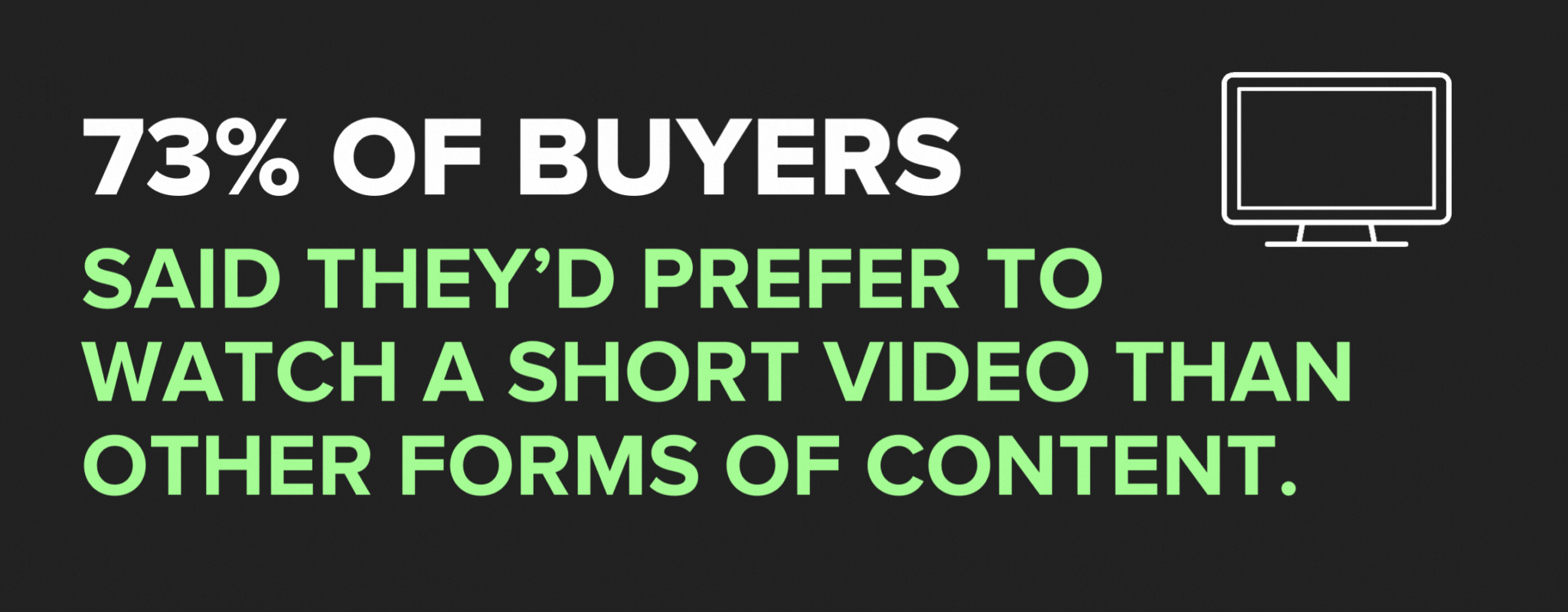
Video can be one the most useful tool in educating quickly and thoroughly.
In fact, when asked how they’d most like to learn about a product or service, 73% of buyers said they’d prefer to watch a short video over other forms of content.
Knowing this, it's a huge mistake to not incorporate other mediums, especially video, into your assignment selling materials.
How to fix it:
Meet with your marketing team to talk about creating a wider variety of content. Can they help you by producing video content? Are there other types of content they can make?
Be clear with them: sales enablement materials should take different forms to suit different buyers.
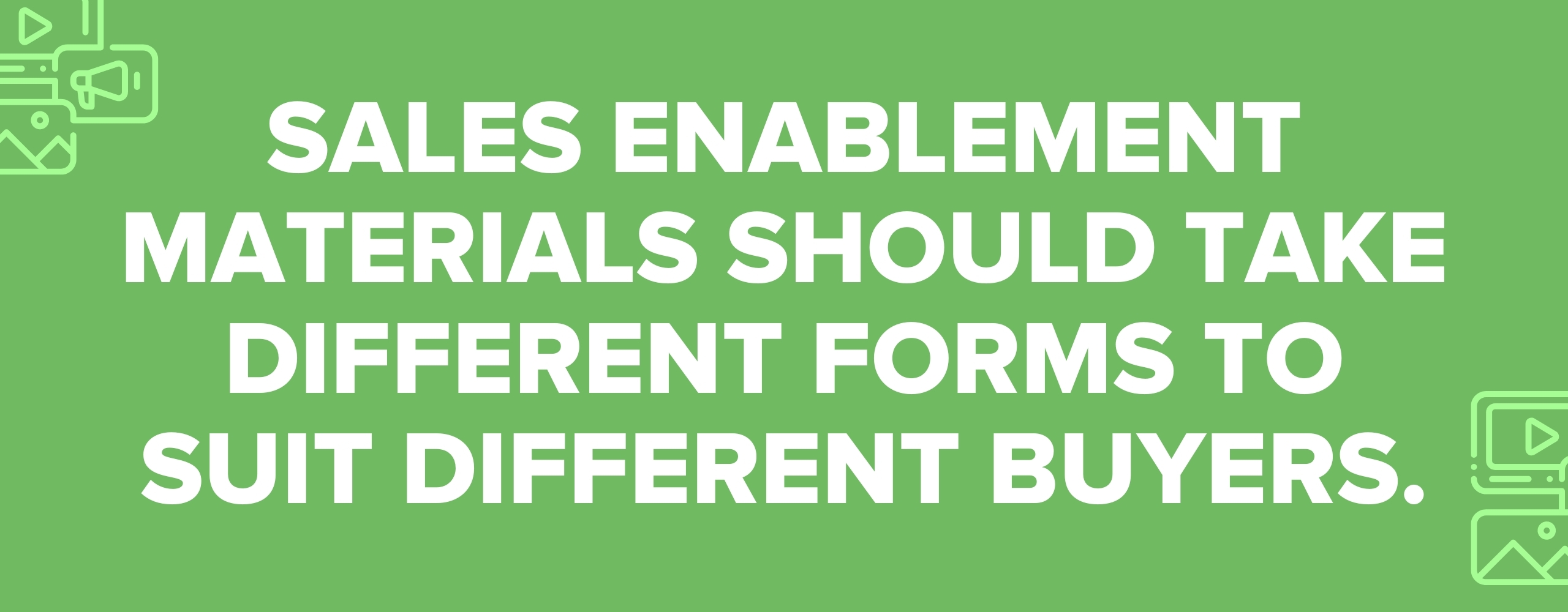
You can also take matters into your own hands.
Use your smartphone or laptop camera to record a video reciting some of the insights shared in an article or use a tool like Canva to create an infographic on your own.
Canva has dozens of templates to help you turn your copy into a compelling infographic to share with your prospects without any design experience.
🔎 Not sure what kind of video to make? You can learn more about what we call 80% videos.
4. Not selecting the right content for each buyer's stage
A prospect just getting to know your company is not in the same position as a final-stage buyer deciding between two options. Both need information from you, but their needs and mindsets are vastly different.
As a salesperson, if you blast out the same content email to every prospect, you're going to come off as generic and insincere.
You may be sending along information that is of zero interest to your prospect and, in turn, you're missing a huge opportunity to resonate and build trust.
How to fix it:
Build up a library of sales enablement materials that answer as many buyer questions as possible and keep them organized by things like the stage of the buyer's journey or pain point.
You can use a tool like Paperflite, HubSpot Sales Hub, or Salesreach to organize and track your content.
From there, whenever you send an assignment selling email, you can check your library and choose the material that is best suited to that prospect based on conversations you've already had and conversations still to come.
The right path for sales enablement
Your website and digital content are the best sales tools your reps will ever have.
Delivering content to prospects allows your sales teams to spend their time in the right places — closing deals, not "working" deals.
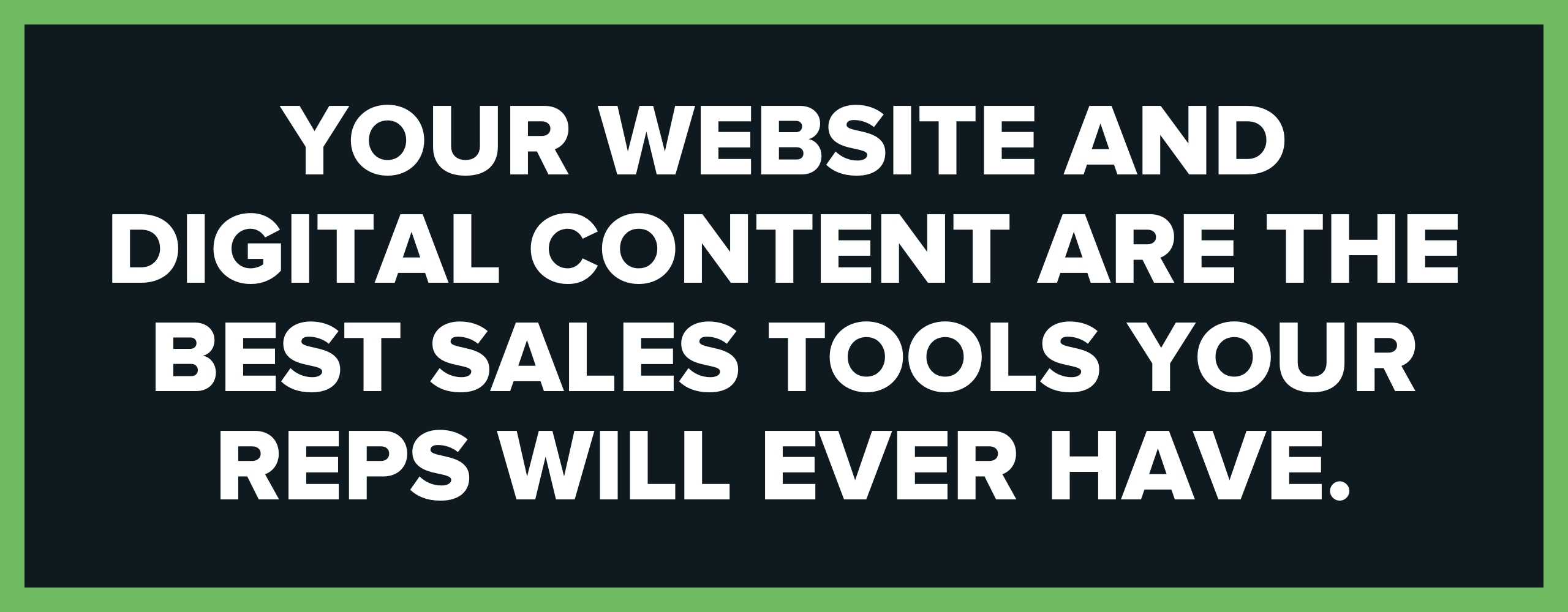
Assignment selling is the key to:
- Better qualifying a prospect's commitment to the sales process
- Shortening the sales cycle
- Devoting time to more qualified leads
- Dramatically improved close rates
Avoiding the common mistakes above will help you use this process in the most effective way possible. Keep tweaking and evaluating as you go, sharpening your skills and improving your technique.
Want to dive deeper into assignment selling and how to do it right?
Take our free course "Assignment Selling: Content Is Your Greatest Sales Tool" today!


Order Your Copy of Marcus Sheridan's New Book — Endless Customers!

